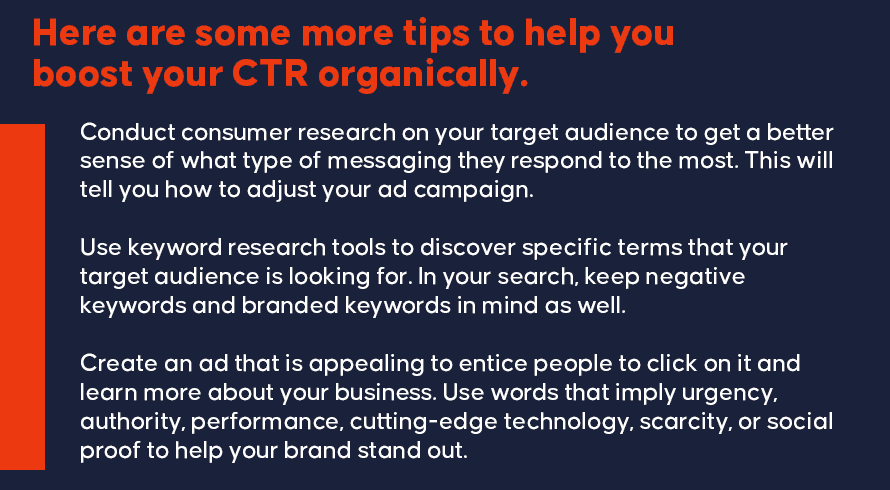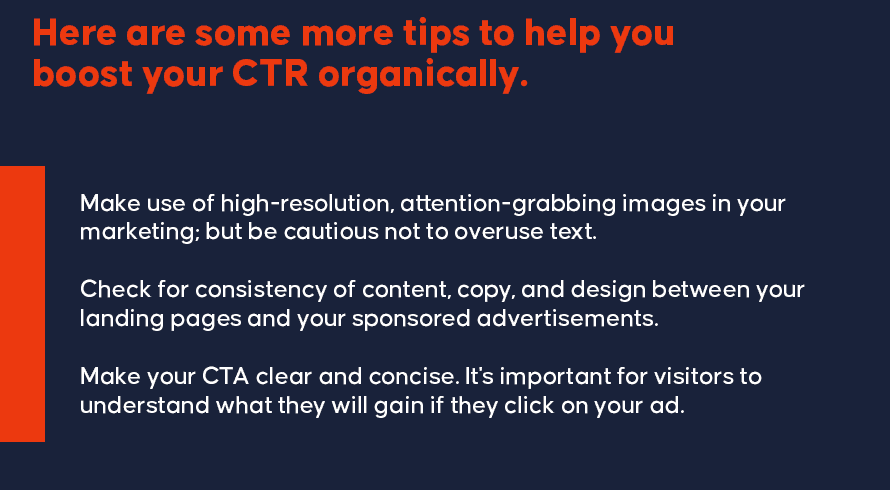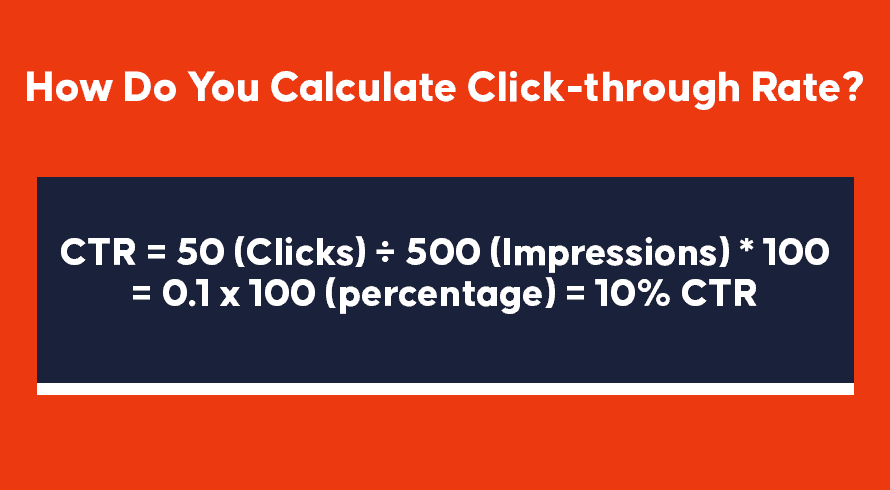Inquivix HQ
1-903, 18 Eonju-ro 146-gil,
Gangnam-gu, Seoul, Korea
06057

What is a click-through rate and how does it work? This is a question that many business owners have but don’t know where to find the answer to. A click-through rate calculator can help you determine how effective your marketing campaigns are. It is a metric that calculates the number of times a user clicks on a link in an email or online advertisement, compared to the total number of impressions that the ad received. This metric is used to measure how successful your marketing campaigns are and can help you determine whether or not you need to make changes.
Knowing how to use the insights from CTR can help a business evaluate its marketing campaigns. In this blog post, we will discuss what a click-through rate is and how to use a click-through rate calculator to improve your marketing strategy!
What Is Click-through Rate and What Is Its Use in Digital Marketing?
The CTR in a digital advertising campaign is the number of clicks generated divided by the total number of impressions delivered. CTR is an important metric because it can tell you how interested people are in what you’re advertising.
In other words, it is the number of clicks instead of the number of times a website has been shown to a person (impressions). For example, if you have 200 impressions and 30 clicks, then your CTR would be 15%.
CTR is the key statistic to compare how effective your ad has been in generating a click when compared to the number of impressions it took to deliver that click. CTR is the best measurement for evaluating results if your KPI (key performance indicator) is to get visitors to a specific URL or landing page. Measuring how good an ad has been is the best way to compare if it is successful or not. In online advertising, it means how many times people have clicked on your ad when you showed it to them and compared it to how many times they saw it. The higher the number, the better it has worked.
Conversion Rate vs. Click-through Rate – Which One Should You Measure?
Conversion rate and click-through rate are two different ways of measuring the success of your marketing campaigns. However, it can be difficult to decide which one to measure as they both give insight into different aspects of your ad campaigns.
A conversion rate is the percentage of people who click through your ad or email and then go on to complete the desired action, such as making a purchase or signing up for a subscription. This metric, therefore, measures how successful your campaign is at getting people to take the desired action.
High CTR or High Conversion Rates?
Which is more important for business success: a high click-through rate (CTR) or a high conversion rate (CR)? The answer is both! Most marketers are more concerned with CTA (Cost to Acquire) than anything else. This is normally interpreted as paying customers. A business needs paying customers to stay afloat, but it is highly challenging to acquire customers without a high click-through rate (CTR).
A high CTR does not necessarily mean a high conversion rate, but it is impossible to get a high conversion rate without a high click-through rate. Make sure you focus on creating a high-quality clickable ad that will entice people to click through to your landing page. To create a high conversion rate, you need an effective lead capture form and an optimized landing page. You also need to have a well-designed and user-friendly landing page. If you can nail those two things, then you’re well on your way to achieving a high conversion rate.
Why Is the Click-through Rate Important?
There are many factors that go into calculating a click-through rate (CTR), but it is generally agreed upon that it is one of the most important metrics for online advertising. In a nutshell, CTR measures how often people click on your ad after seeing it. If you have a high CTR, it means you’re doing something right and your ad is resonating with people. Conversely, if your CTR is low, then you may need to rethink your strategy.

One reason why CTR is so important is that the Google search engine uses it to determine how valuable your ad is. The higher your CTR, the more likely Google will show your ad to other people. How many impressions your online ad has an effect on your CTR. This can be especially beneficial for businesses looking to increase their visibility online and generate conversions. CTR is an indicator of how engaging your display ad or PPC campaign is.
So, if you’re looking to increase your click-through rate, make sure you focus on creating high-quality ads that people will want to click on. You may also want to experiment with different ad placements and targeting strategies to find what works best for your business. By doing this, you’ll be able to improve your CTR and boost your online advertising results!
How to Boost Organic Click-through Rates?
Boosting organic click-through rates (CTRs) is essential for any business that relies heavily on traffic from search engines. A high CTR means more visitors, which leads to more customers and a better bottom line. There are a few things you can do to boost your organic click-through rate.

The first thing to consider is whether your title is click-worthy. Make sure it accurately reflects the content of the article and attracts people’s attention. You should also use relevant keywords in your title and throughout your article. This will help improve your ranking in search results, which will lead to more clicks. Finally, be sure to test different headlines and optimize them for click-through rate.
- Conduct consumer research on your target audience to get a better sense of what type of messaging they respond to the most. This will tell you how to adjust your ad campaign.
- Use keyword research tools to discover specific terms that your target audience is looking for. In your search, keep negative keywords and branded keywords in mind as well.
- Create an ad that is appealing to entice people to click on it and learn more about your business. Use words that imply urgency, authority, performance, cutting-edge technology, scarcity, or social proof to help your brand stand out.

- Make use of high-resolution, attention-grabbing images in your marketing, but be cautious not to overuse text.
- Check for consistency in content, copy, and design between your landing pages and your sponsored advertisements.
- Make your CTA clear and concise. It’s important for visitors to understand what they will gain if they click on your ad.
Benefits of Using a CTR Calculator
A click-through rate calculator assists you in calculating the proportion of people who click on your ad against how many individuals see it. When you employ a CTR calculator, you get an instant result. You won’t have to crunch the figures yourself, making an online CTR calculator a must-have tool for any marketer.
Your CTR is one of the most important elements in your marketing campaign, and you should check it once a month or more for optimal results. If you use a CTR calculator on a regular basis, you’ll be able to track your CTR monthly and see how your ad’s performance changes over time. You may also assess when your advertising needs improvement by using your CTR. If you’re having trouble converting your customers, start by calculating the click-through rate of your advertisements using a click-through rate calculator.
How Do You Calculate Click-through Rate?
To figure out the click-through rate for an ad, you have to divide the number of times people clicked on it by how many times they saw it. Let’s take a look at an example scenario. Imagine that your ad generated 50 clicks and was seen by 1,000 individuals during its campaign.

Conclusion
You’ve just read about the click-through rate and a CTR calculator – what it is and how it works. Now that you understand its benefits, put it to use on your own website and see how much of a difference it makes in terms of click-through rates. Remember, even a small increase can make a big difference when it comes to your website’s success. If you found this article helpful, please share it with your friends and colleagues. And be sure to check out our other blog posts for more tips on improving your marketing efforts.
